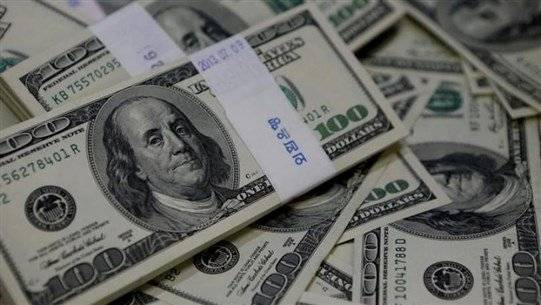A noteworthy development has emerged in the balance sheet of the Central Bank of Lebanon, reflecting a monthly increase in hard currency reserves amounting to approximately $418 million within a month, starting from mid-last month. This marks the first monthly increase of its kind since the fall of 2019, a period that signifies the onset of monetary and financial collapses in the country, which continue to exert severe pressures on the exchange rate of the national currency. This remarkable development comes against the backdrop of ongoing cash transactions in parallel markets exceeding 40,000 pounds per dollar and anticipations of a new wave of inflation at the beginning of next month, coinciding with the implementation of a rate of 15,000 pounds per dollar in calculating duties on imports. This will automatically reflect in the calculation of VAT, set at 11 percent on most consumer goods, noting that the cumulative inflation index has exceeded 1300 percent over the past three years.
The diminishing central role of the central bank in managing the foreign exchange market and exchange operations, due to the ongoing and severe shrinkage of its reserves, has led to deep monetary distortions, evidenced by the multiple exchange rates: the official rate of 1,515 pounds per dollar, the actual market rate exceeding 40,000 pounds, and the rates on the “Sayrafa” platform around 30,000 pounds, in addition to special withdrawal rates from dollar accounts at 8,000 and 12,000 pounds. Finally, there is the customs dollar rate, which has opened the gates of consumer markets to rampant inflationary waves, amid sharp and successive contractions in income and savings.
In its intended rescue plan to be submitted to the International Monetary Fund, the government acknowledges the necessity of unifying the exchange rate and transitioning Lebanon to a flexible exchange rate system that helps absorb shocks and allows monetary policy to focus on its main objective, which is price stability. It considers price stability and curbing inflation amid a declining budget deficit and tight monetary policy as crucial for maintaining competitiveness through the real exchange rate, aiming for limited central bank intervention in the foreign exchange market to avoid significant fluctuations. Thus, this “surprising” increase has formed a unique lever to restore the total usable cash reserves to a level of $10 billion; this enhances the volume of foreign currency liquidity at the central bank, which manages the bulk of daily cash operations through the “Sayrafa” platform, meeting, through it and via the banking sector, the requests of individuals and companies with an average exceeding $60 million in the past week, at a rate of 29,800 pounds per dollar, which is nearly 10,000 pounds less than the prevailing exchange rate in parallel markets exceeding 40,000 pounds.
The central bank typically does not disclose the backgrounds of its balance sheet or its implications on both assets and liabilities, nor the composition of hard currencies in its reserves. However, banking sources following the situation suggest that a qualitative change in its policies regarding direct intervention in informal foreign exchange markets may be underway, aiming to attract quantities of cash dollars through money transfer companies and exchange networks. Additionally, there may be the possibility of starting to calculate the effects of the Ministry of Finance beginning to collect fees and taxes in dollars through air and sea gateways, in addition to revenues generated in dollars from Middle East Airlines, mostly owned by the central bank.
Simultaneously, with the qualitative and quantitative change in the reserves movement from continuous decline to the exceptional increase in the last two periodic disclosures of the bank’s balance sheet, the monetary mass in pounds, categorized under “currency in circulation outside the central bank,” has witnessed a drastic increase, reaching around 70 trillion pounds in mid-month, compared to about 45 trillion pounds, indicating a difference of nearly 25 trillion pounds injected within a single month since mid-September. However, on an annual basis, indicators related to reserves have maintained their negative trend, with the value of Lebanon’s external assets declining by approximately $3.7 billion—a nearly 20 percent decrease compared to the level during the same period last year, which was then $13.79 billion, following the exclusion of the nominal value of international bonds issued by the Lebanese government (Eurobonds) valued at $5 billion, held by the central bank.




